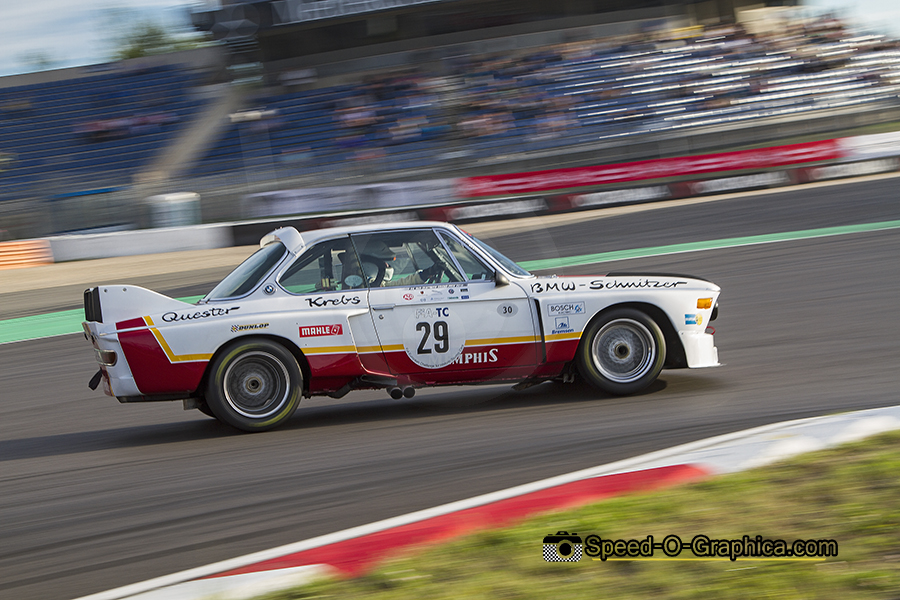The Abrupt End of an Era: Schnitzer Motorsport, The Early Years

By Marcel Hundscheid / Speed-O-Graphica
Late last year, after a period of more than half a century, BMW announced the end of its relationship with the Le Mans 24 Hours-winning Schnitzer Motorsport squad. So, in our latest series of articles, we will take a look back at the legendary partnership.
The success story started back in 1963 in Freilassing near Munich, as brothers Josef and Herbert Schnitzer, both car mechanics, bought an accident-damaged Fiat. It was decided to restore the car and take it racing. Thus the Schnitzer family’s motorsport career was born.
While Josef continued his racing career, brother Herbert concentrated on sales. Schnitzer became a distributor for new and used BMWs. Three years later, Josef grabbed Schnitzer’s first ever victory by winning the German Touring Car Championship in a self-tuned BMW 2002ti.

German Ernst Furtmayr won the European Hill Climb Championship in 1968 and 1969 driving a Schnitzer-BMW 2002Ti. He repeated this success in 1970 in a Schnitzer-prepared BMW 2800 CS. A fourth title followed in 1971 gained by the Swiss Walter Brun, again with the proven BMW 2800 CS. Besides Brun’s activities with Schnitzer, he became the co-founder of Brun Motorsport in 1983.
Four years later, Schnitzer choose a totally different challenge, stepping into the world of the single seaters with Formula 2. The 1975 European Formula 2 championship was dominated by the French, with Jacques Lafitte driving a Martini Mk.16 powered by a Schnitzer BMW M12 engine to victory in the European Formula 2 Championship. It was Schnitzer’s maiden title in single seater racing.
In that same year Schnitzer missed the German DRM title due to a technical problem. German business man and architect Albert Krebs bought a seat at Schnitzer Motorsport, where he’d drive a BMW 3.0 CSL. Although he didn’t impress at all at the beginning of the season, he improved steadily and eventually fought for the championship title. A broken valve spring during the 10th lap of the final race cost him the championship.

1978 would be a year of great contrasts for Schnitzer. The team’s new driver, Austrian Harald Ertl, gave the renowned German team the coveted title in the DRM Championship (Deutsche Rennsport Meisterschaft).
Ertl worked as a motorsport journalist on the side of his racing. He started in German Formula Vee and Super Vee before he entered Formula 3, but his greatest successes were found in touring car racing. Before he entered the popular DRM-championship, he drove Formula 1 cars for Hesketh Racing and Ensign. Ertl was one of the four drivers who helped Niki Lauda out of his burning Ferrari during the 1976 Grand Prix at the Nürburgring.
Schnitzer developed a Toyota Celica LB Turbo for Ertl in 1977, based on their experience with BMW. The Celica LB Turbo was Schnitzer’s attempt to take on the might of the Porsche 935 and built for the German DRM championship.
Ertl debuted the car at Hockenheim on July 30th 1977, powered by a 18R type G engine with a KKK turbocharger generating 560 hp. Ertl qualified in 13th place, 25 seconds per lap slower than the best qualified Porsche 935. Rolf Stommelen drove the second Toyota but like Ertl, reliabilty issues resulted in multiple DNFs. By the end of the season Schnitzer switched back to BMW.
Harald Ertl was tragically killed in an private aircraft accident at the age of 33 in Germany in 1982. Rolf Stommelen lost his life during at Riverside International Raceway back in 1983 driving a John Fitzpatrick-entered Porsche 935.
In our next episode we continue our Schnitzer Motorsport retrospective with the BMW 320i Group 5.
